Vilnius-Lithuania
Vilnius, where the Old and the New Town merge seamlessly into one another, stands out as a city that has a unique blend of both Eastern and Western European charm.
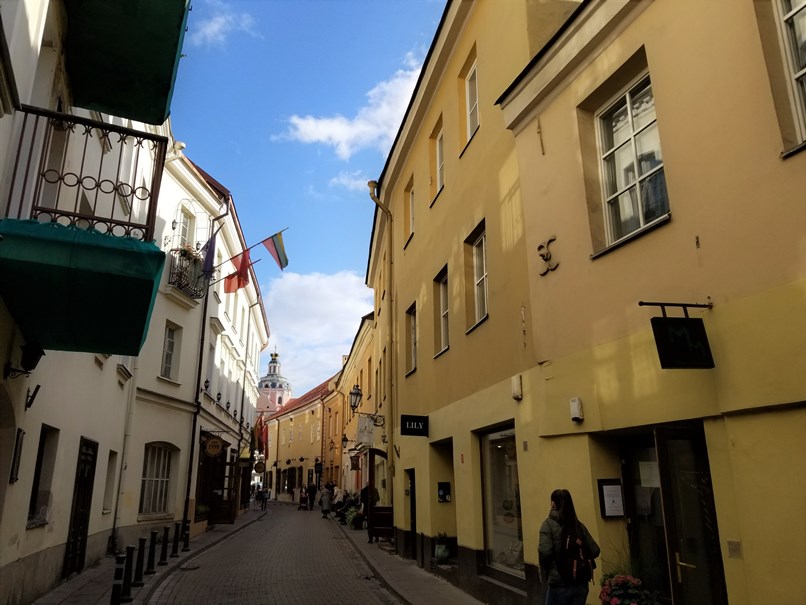
The Grand Duke Gediminas, who ruled Lithuania for 25 years from 1316 until his death in 1341, is remembered in the annals of Lithuanian history as having been both a military man and a diplomat. He was responsible for moving the capital of Lithuania to Vilnius from Trakai, and during his rule, expanded Lithuania’s territory from the Baltic Sea to the Black Sea. Today Gediminas’ Tower (the remaining part of Vilnius’ upper castle) can be seen from a distance watching over the city.
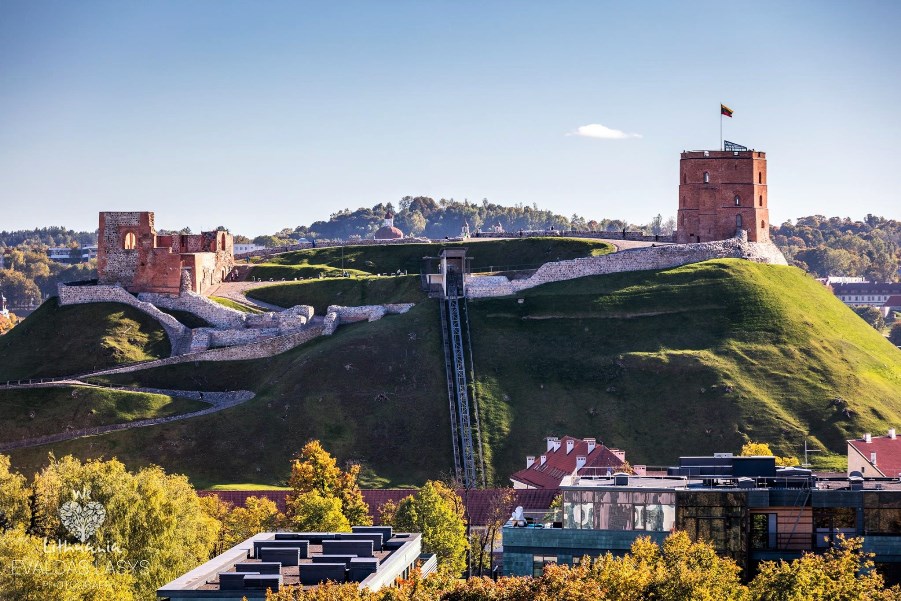
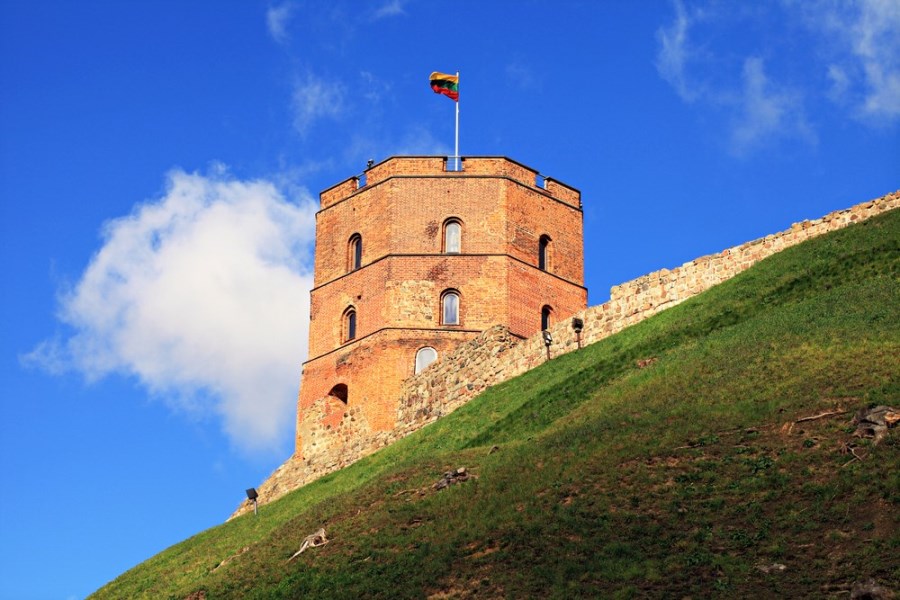
It was Gediminas who, in the 14th Century, welcomed the Jews to Lithuania, where they thrived both culturally and economically. By the mid-18th Century, Vilnius was one of the most vibrant centers of Jewish life and culture and was often referred to as ‘Jerusalem of the North.’
With Talmudic scholars of the caliber of the great Jewish rabbi known simply as the Vilna Gaon (Vilna Genius) not only for his knowledge of Torah and Talmud but also his mastery of mathematics, science, astrology, and philosophy, Vilnius had become a center of Jewish study and learning.
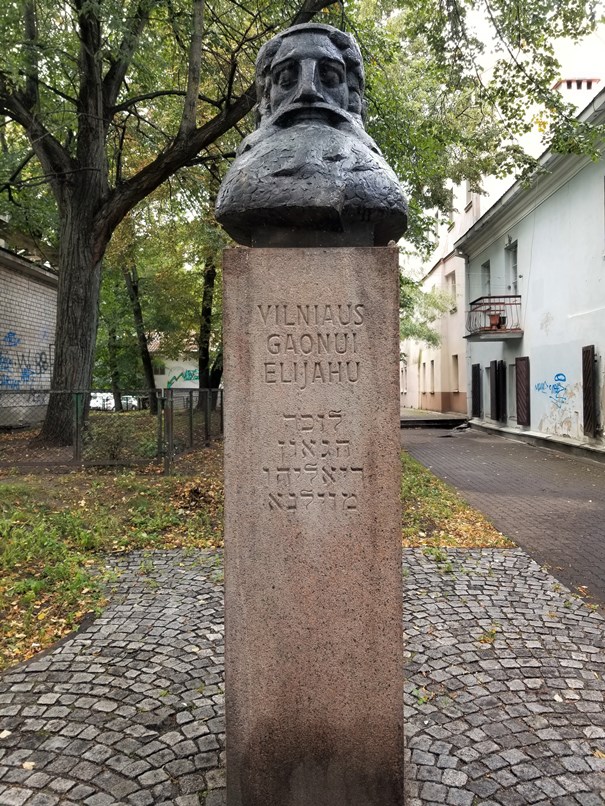
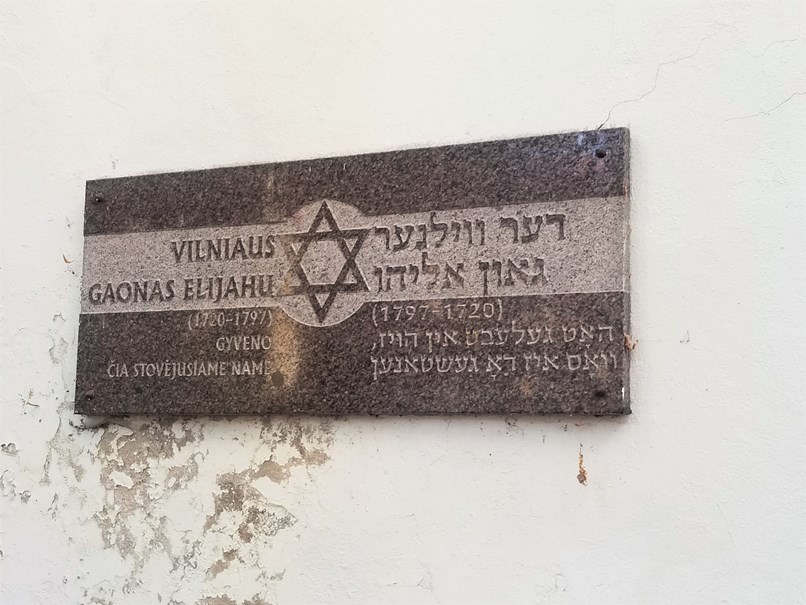
Before World War II, it is estimated that approximately 210,000 Jews lived in Lithuania. By the end of the war, 95% of Jews had been exterminated during the three-year German occupation thanks in part to the collaboration of non-Jewish, Lithuanian para-militaries.
Guided walking tours of Old Town that include historical Jewish sites are a fine way of exploring Vilnius’ Unesco World Heritage Old Town. Be on the lookout for wall plaques, copper memorial plates on the pavements, sculptures, and Hebrew script, which alert the visitor to the fact that there are remnants of Jewish life to be found in the area.
Of particular note is the monument to the Vilna Gaon; the plates on Zydu-Jew Street, in Hebrew and Yiddish; and the touching statue of Zemach Shabad – a Jewish doctor, philanthropist, and educator – in conversation with a young girl who is cradling a kitten in her arms.
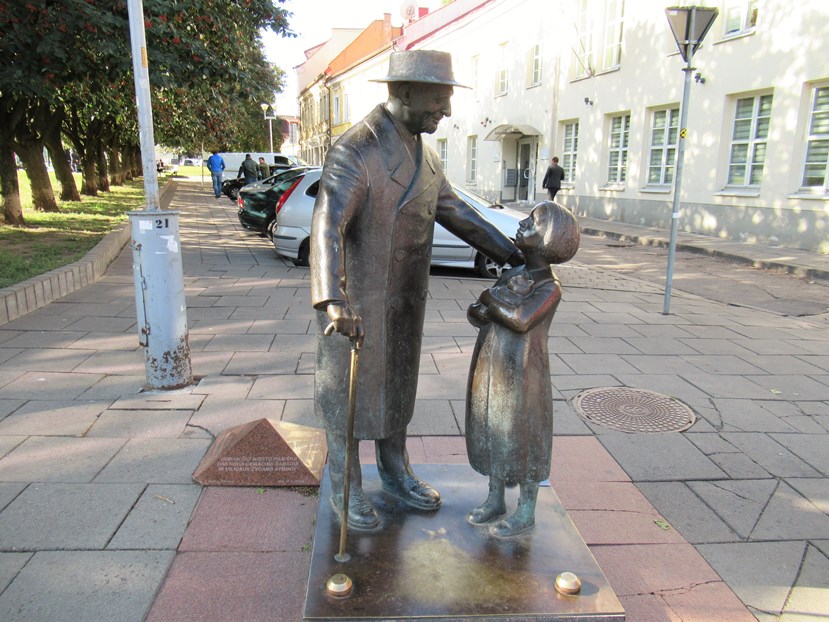
We stayed in the heart of the small ghetto at Hotel Stikliai, an elegant, cozy, hotel that radiates old-world European charm. Stikliu Street can be found in old Vilnius maps dating back to the Middle Ages. During the 17thcentury it was the center of Jewish commerce and glass manufacturing in Vilnius.
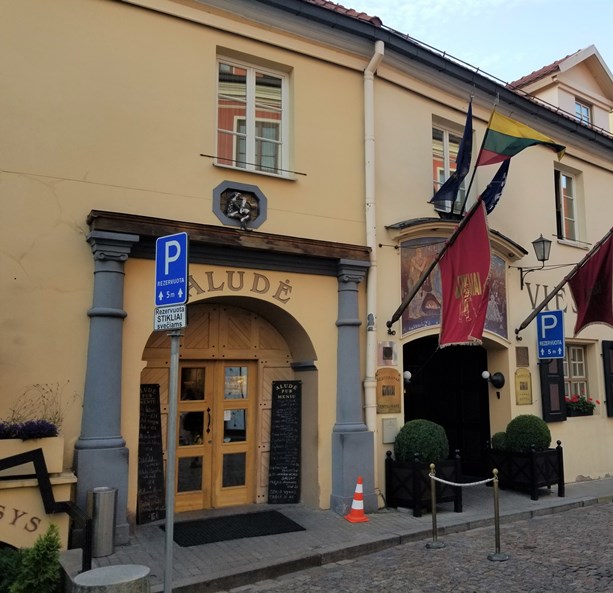
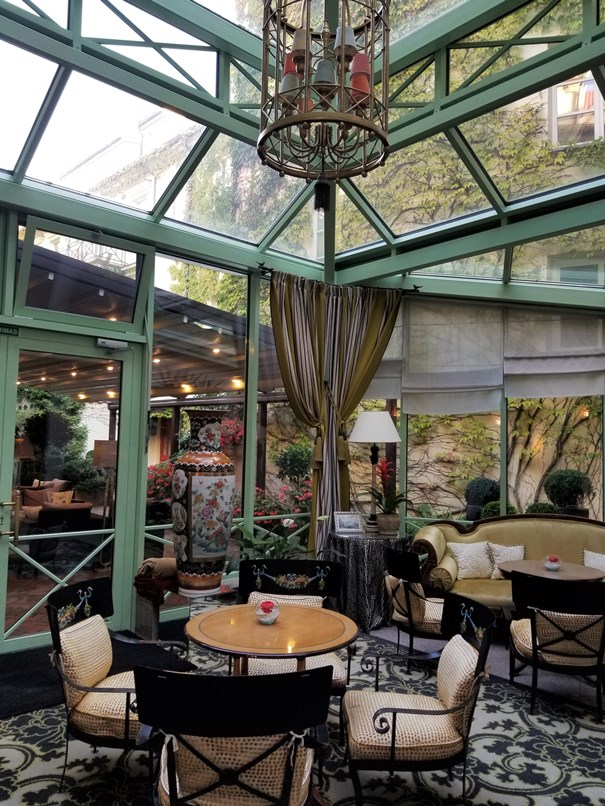
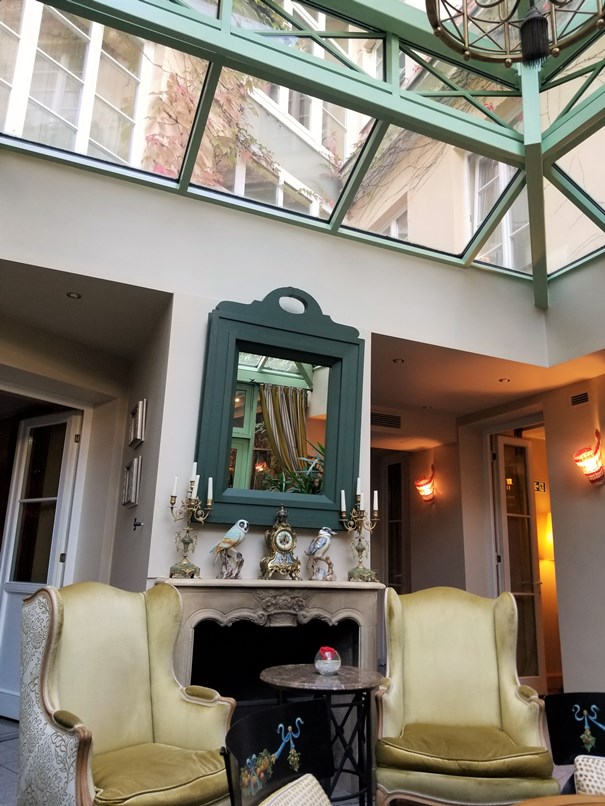
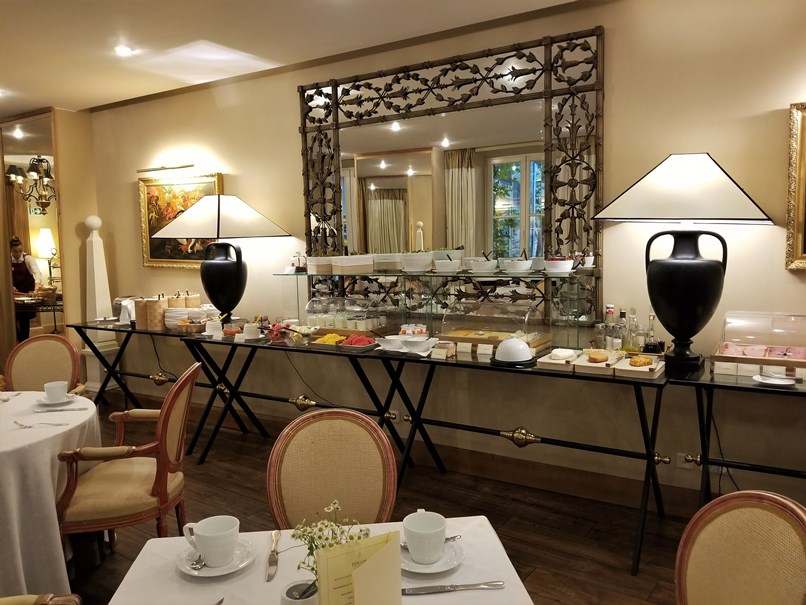
During the Nazi occupation, 11,000 Jews were confined to the Small Ghetto. At the entrance to Stikliu street, you’ll find a photo mounted on the wall of the Nazis rounding up Jews.
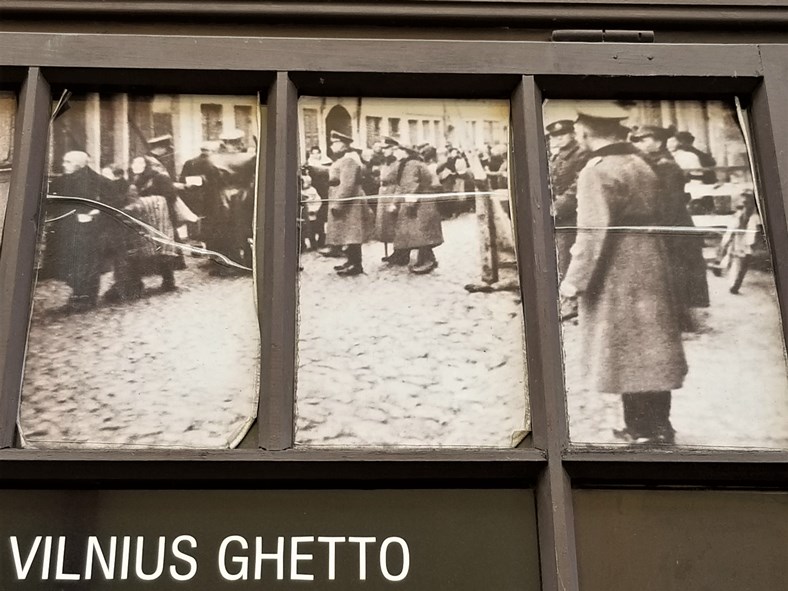
Meander through the twisting narrow streets of Old Town, admire the Baroque architecture that has been lovingly restored, shop for souvenirs and gifts, and venture into hidden courtyards.
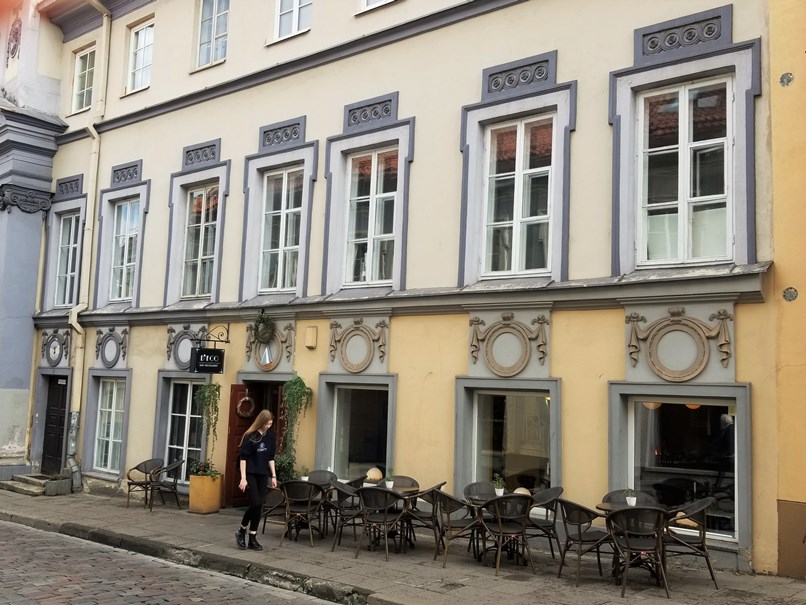
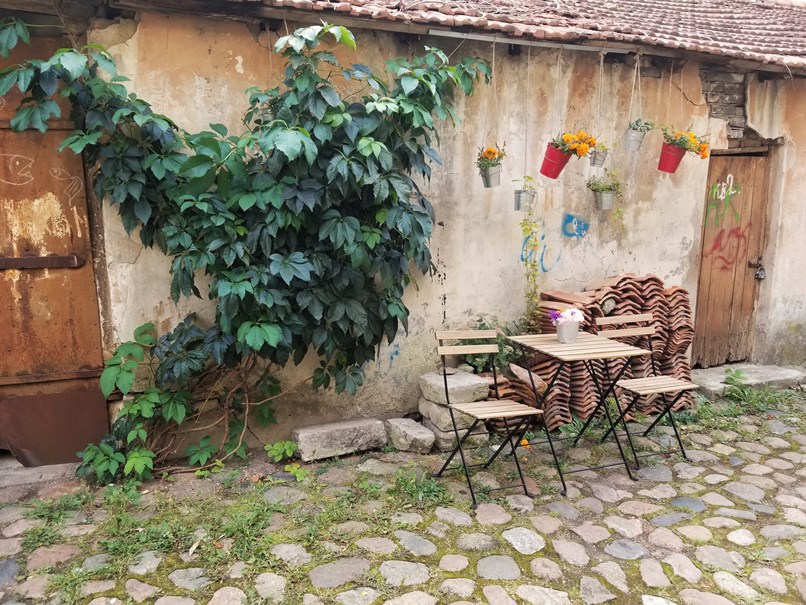
Pop into a bistro or restaurant and linger over a meal, or grab a seat at an outdoor wine bar and soak up the relaxed ambiance of Old Town. We loved the food and hospitable staff at Bistro 18 at 18 Stikliu Street.
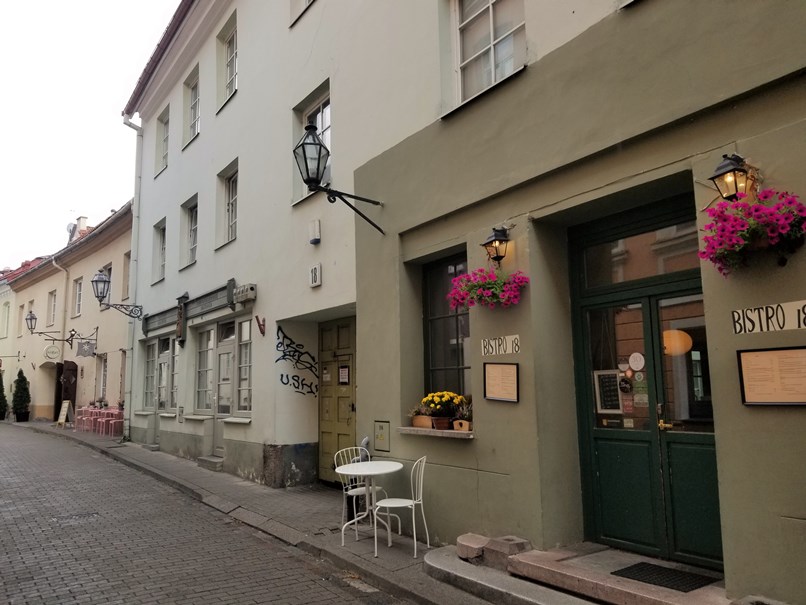
Make your way towards Pilies Street, which will lead you out of Old Town towards Cathedral Square – but just before you reach the end of Pilies Street – don’t miss AJ Chocolate Restaurant at 8 Pilies Street. It’s a chocolate lover’s wonderland! We sat in the charming old-world tea room and indulged in frothy cappuccino and chocolate-Cointreau cake to die for. The variety of chocolate desserts, drinks, and chocolates, is overwhelming for those of us addicted to chocolate.
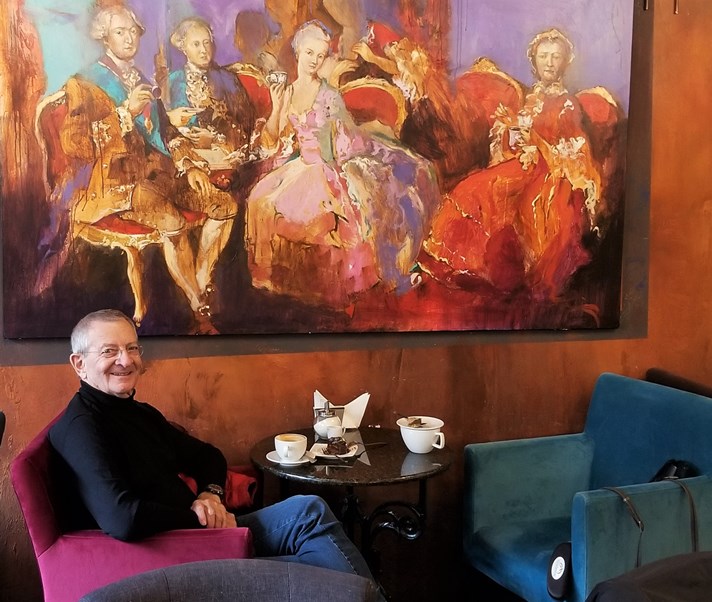
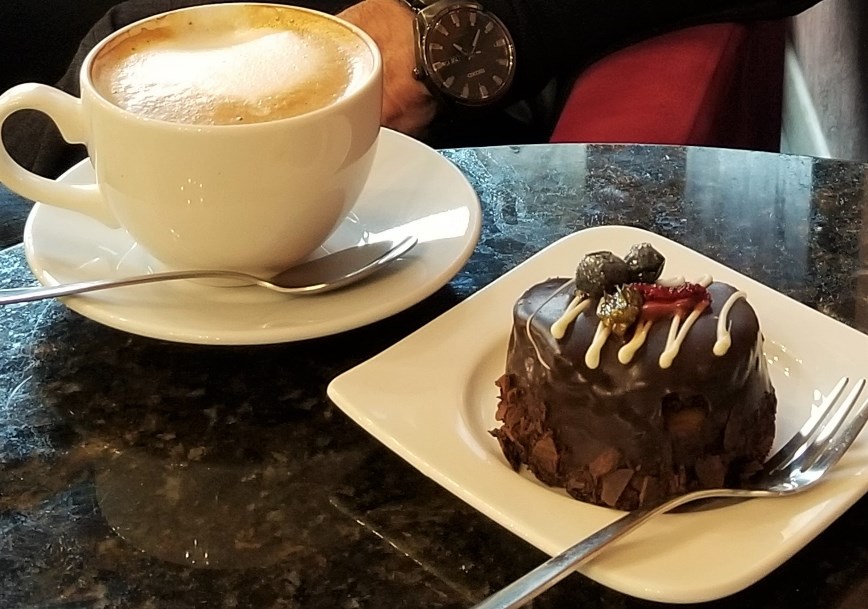
Cathedral Square is an impressive, grand, square, where people meet, toddlers ride their tricycles, and celebrations and fairs are held.
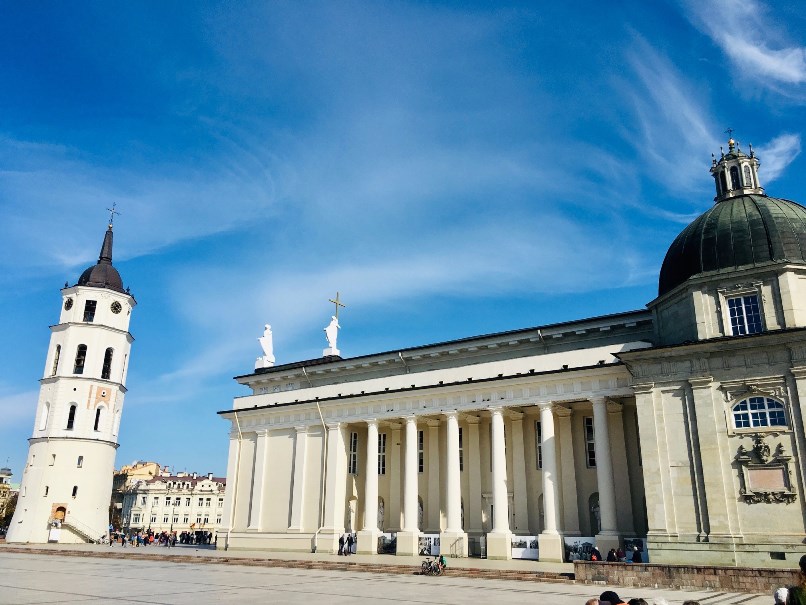
Here you’ll find the newly restored Palace of the Grand Dukes fronted by the memorial monument for the Grand Duke Gediminas, the Vilnius Cathedral, and the landmark Cathedral Belfry. Though the exterior of the cathedral is rather austere, do visit the beautiful St. Casimir’s Chapel within the cathedral.
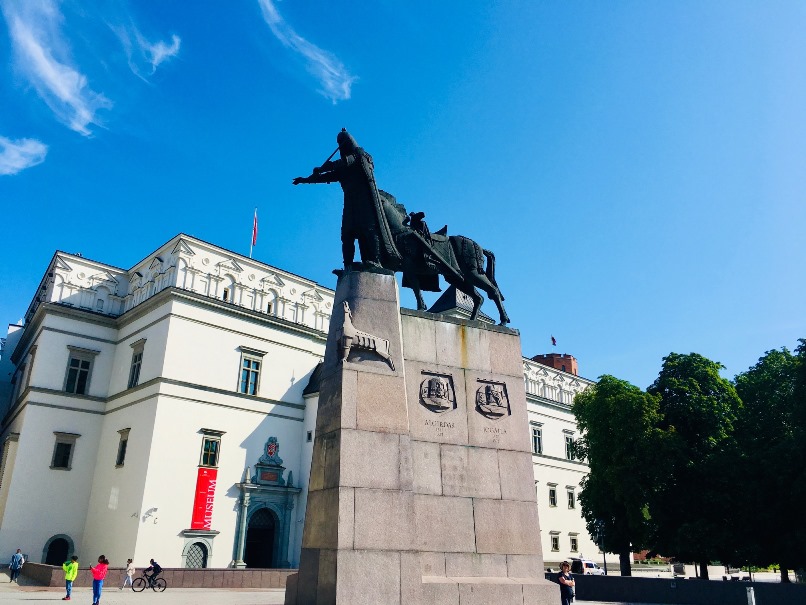
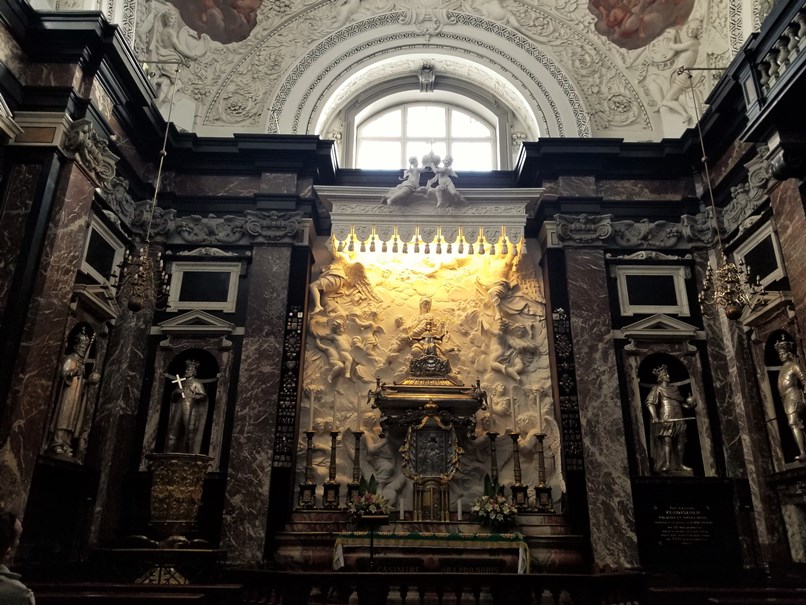
From Cathedral Square walk down Gedimino prospektas, a wide boulevard where you’ll find yourself in the vibey new city of Vilnius that boasts an array of international stores and eateries.
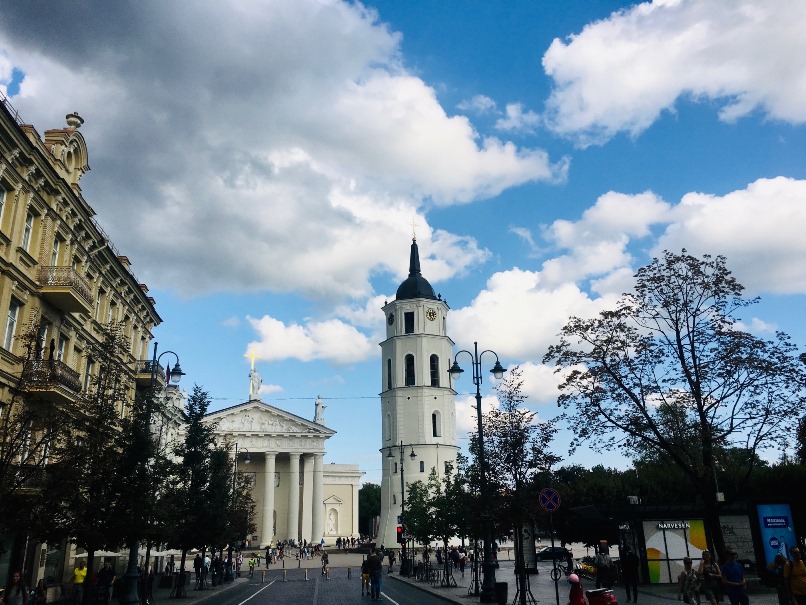
Towards the end of Gedimino Boulevard, you’ll come to the Museum of Occupation and Genocide Victims – the former headquarters of the Gestapo and then the KGB during the long, dark years when Lithuanians were subjected to the iron fist of Russian rule.
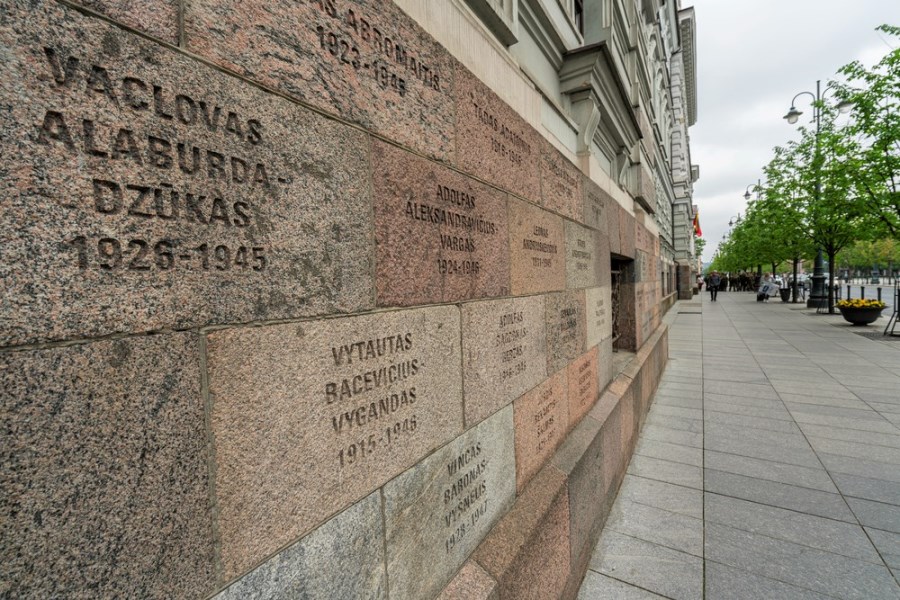
Back in the Jewish quarter, enter the Large Ghetto via the gate at 18 Ridninku Street, the site of the Great Synagogue of Vilna, which was destroyed by the Russians in the 1950s. Today, a typical Soviet-era, grey brick, block style building stands on the site. There are currently efforts underway to excavate the remains of The Great Synagogue that lies below ground level.
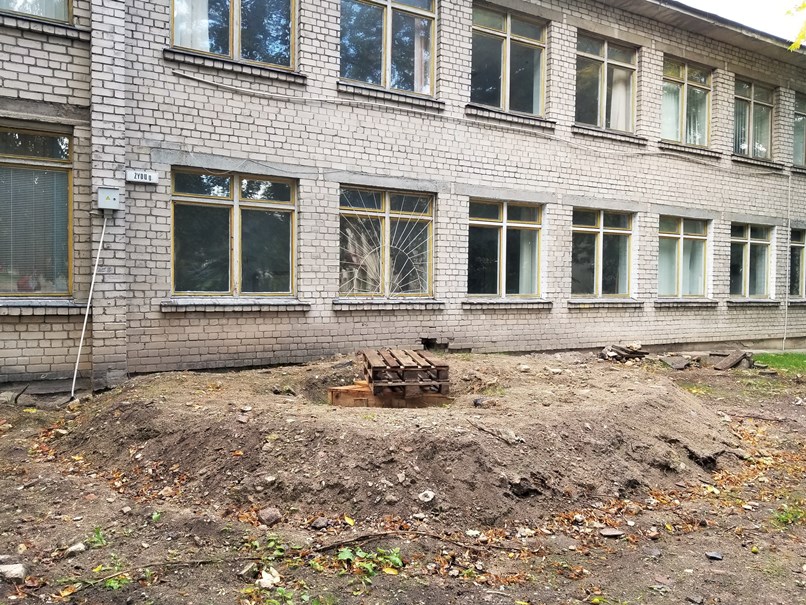
Not to be missed is the Tolerance Center on Naugarduko Street, which is also home to the Samuel Bak Art Museum. Bak is a world-renowned artist who started painting and drawing as a child. During the years of the Holocaust, he drew on whatever scraps of paper were available. He immigrated to Israel in 1948 and now lives in the United States.
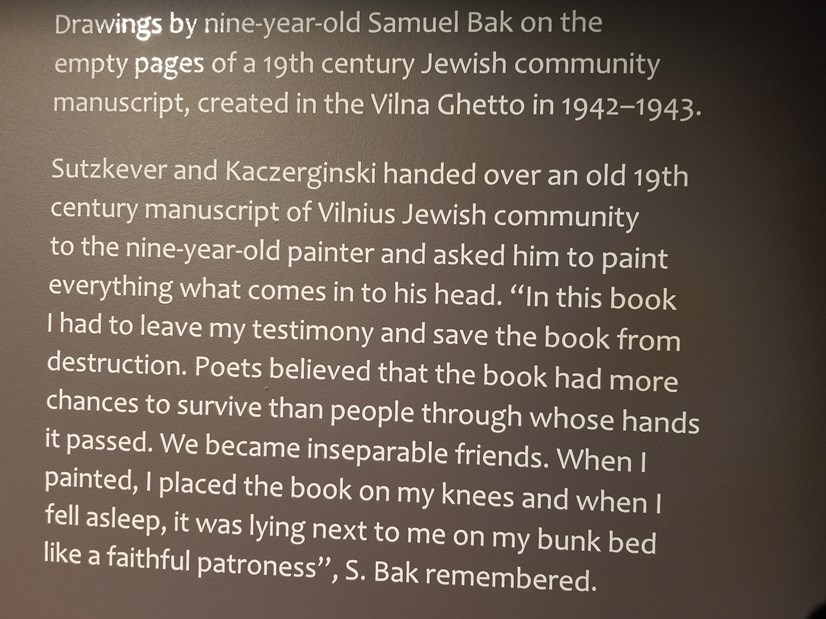
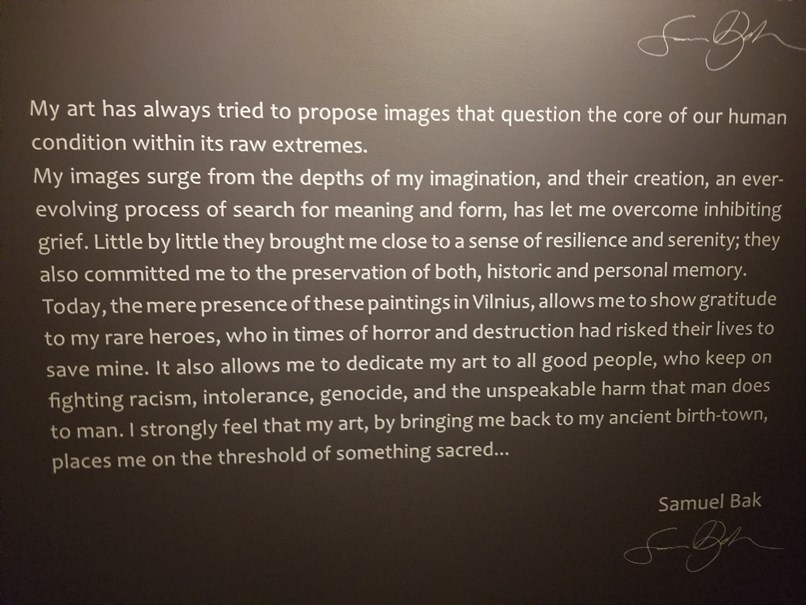
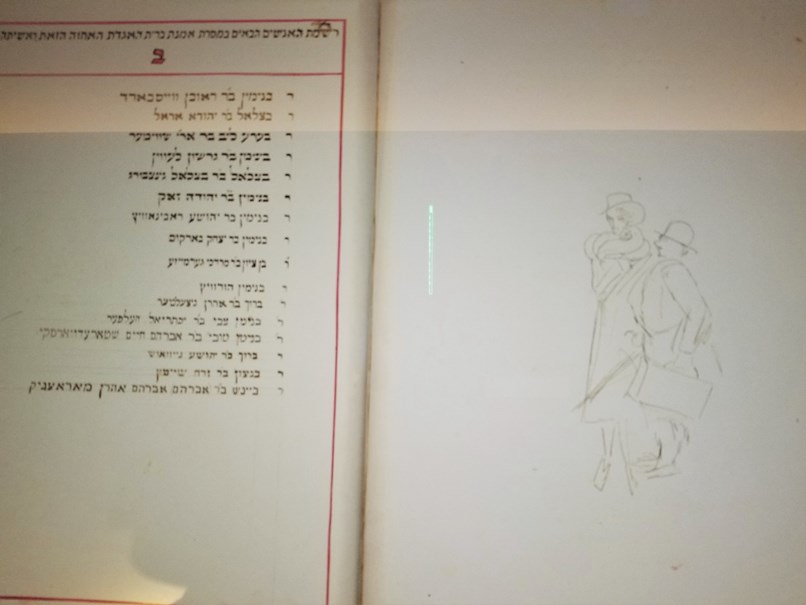
The Holocaust Museum on 12 Pamenkalnio Street is housed in a large green house. With its authentic collection of photographs, diaries, letters, and documents, it gives a candid account of the destruction of Lithuania’s once vibrant Jewish community.
The Choral Synagogue, built in a Romanesque-Moorish architectural style, was constructed in 1903. It is the only synagogue still in use in a city that once had over 100 synagogues. All the others were either destroyed by the Nazis or by the Russians during their occupation of Vilnius. The Choral Synagogue suffered severe damage at the hands of the Soviets, who used it to house a metal factory. In 2010 it was restored to its present condition.
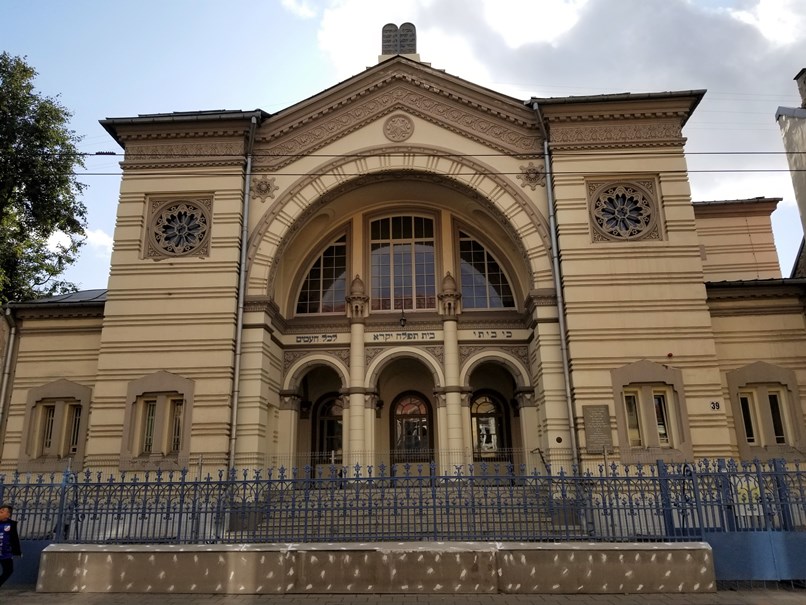
Today there is a small, active Jewish community in Lithuania who is working to preserve its Jewish history, which is important to all Lithuanians. On March 11, 2020, Lithuania will celebrate 30 years of independence from Russia. One marvels at what this small, dynamic country has achieved in only 30 years.
Disclosure – The following photos were not taken by me:
*The photos of Gediminas’Tower and the KGB Museum.
*The three photos of Cathedral Square are courtesy of Marius Markevicius.
